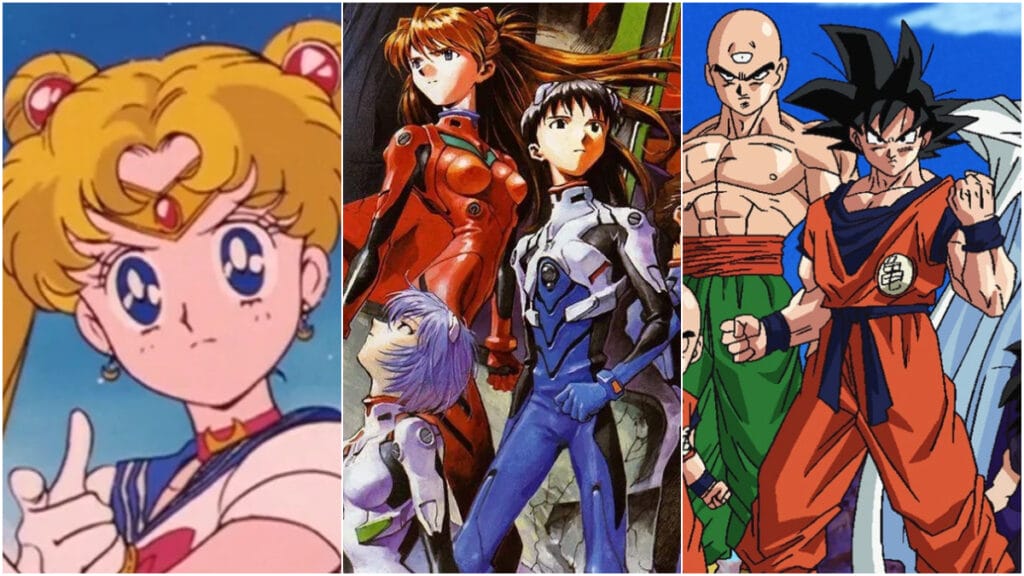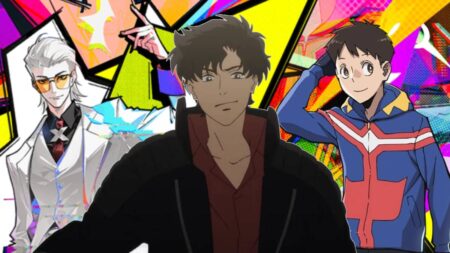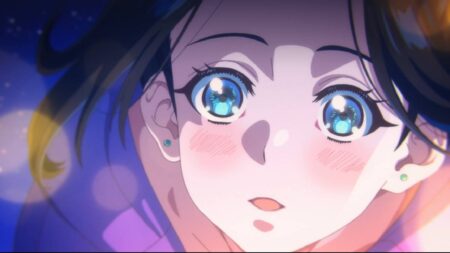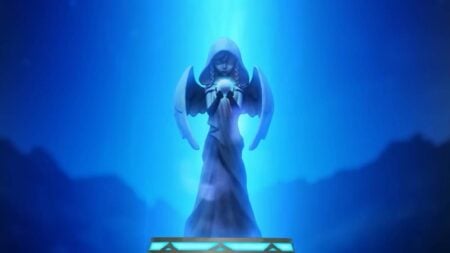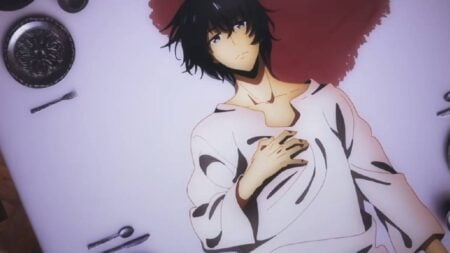Skip To...
When the world finally grew tired of disco, neon-lit retro-futurism, and the looming nuclear apocalypse from the ‘80s, humanity was quick to transition into the darker and uncharted territory of the ‘90s. From there on, a new generation of nerds enjoyed some rather distinct luxuries such as the internet, grunge, and of course, the best 90s anime of all time.
This decade also marked a significant change for anime. It was during the ‘90s when anime became more widely recognized in Western fandoms. More eyes watching meant more incentives to produce trendsetters. Consequently, they have withstood the test of time and will continue to be remastered in later decades. The following best 90s anime stood at the forefront of this cultural development.
Dragon Ball Z
Before Naruto or any of the “Big Three” in the shonen genre came along, there was Dragon Ball Z and its rather classic take on fighting and battle anime. At the beating heart of this intergalactic spin on the myth of Sun Wu Kong is the similarly named Son Goku. He’s a humanoid alien who can turn into a blond (or sometimes a giant ape) when he gets serious enough.
Of course, there’s no need for an explanation or an introduction– everyone knows Goku! Dragon Ball Z merely tells the adventures of a more mature Goku along with several galaxy-threatening villains, all of whom he’ll punch into submission. Oh, and there’s also this side quest about Dragon Balls that can grant a wish but that’s not important; they’re usually just reserved for bringing Goku back to life in case he dies.
Sailor Moon
Sailor Moon is practically the counterpart of Dragon Ball Z but for girls instead. Back in its heyday, it was also quite progressive. It featured LGBTQ relationships, which, back in the 90s, was still a heavily stigmatized subject matter. Heck, even the premise itself where a group of superpowered teenage girls fought bad guys was new and fresh in the 90s.
For that matter, Sailor Moon remains an important cultural icon both in and out of anime. More importantly, it popularized the magical girl genre, as well as the shoujo genre and demographics in anime.
Initial D
Of course, there’d be an anime about cars and racing! There’s practically an anime for every hobby at this point. But back in the 90s, Initial D put the pedal to the metal in introducing a new sub-genre of anime– one that dealt with the intricacies of street racing culture and semi-delinquent-youths.
Initial D told the growth of a young man named Takumi who, through his demanding tofu delivery job zipping through mountains regularly, became a skilled driver. This classic underdog tale ran so well with so many car guys and even disgruntled youth. It’s also such a unique anime that not many were able to recreate its success.
Neon Genesis Evangelion
Neon Genesis Evangelion is another anime that you simply can’t replicate because its creator was on a different plane of existence when he thought it up. Don’t be fooled by the mecha action– it’s just a guise for this psychologically hypnotic and traumatizing series of Freudian fever dreams. By the time you’re done with the series, you’ll be equally bewildered, confused, amazed, disturbed, and possibly in need of therapy.
In case you haven’t heard of it yet, Neon Genesis Evangelion follows the attempts of an organization tasked with preventing another apocalyptic event triggered by strange entities known as “Angels.” Their plan involves shoving reluctant and mentally scared teenagers into the pilot seat of giant robots with questionable origins. Don’t look for logic here, just absorb the symbolism.
Yu Yu Hakusho
Yu Yu Hakusho is also another significant cornerstone in shonen anime, much like Dragon Ball Z. Because it’s by far the most stylish and definitive battle anime. It even served as some kind of precursor for future successes such as Hunter x Hunter; both were made by the same visionary.
It’s just that Yu Yu Hakusho came around earlier. Yu Yu Hakusho explores an odd redemption tale for a delinquent youth named Yusuke Urameshi. Yusuke was given a second chance in life since he was killed after he saved a child from a car accident. The underworld sent him back to the land of the living with newfound powers and with a new purpose to investigate stray demons in the human world.
If that sounded too familiar, it’s because Yu Yu Hakusho set the groundwork and template for newer shonen or battle anime.
Rurouni Kenshin
Now here’s an anime that went above its weight class and taught children the value of pacifism and the importance of social reforms. It’s an extremely political anime about a wandering and lordless samurai or ronin who now navigates a reformed Meiji-era Japan that’s still reeling from its chaotic shogunate past.
You can already tell just how important this anime is for Japan. But even outside of its intended audience, Rurouni Kenshin also has a universal message of peace to impart to its viewers. Eventually, Rurouni Kenshin also would popularize the trend of protagonists as technical pacifists in anime. They all refused to kill or resort to violence despite being powerful and dangerous.
Great Teacher Onizuka
Speaking of reformed bad boys, Great Teacher Onizuka also dabbles in the notion in a more contemporary or modern sense.
This time around, it’s about a former Yakuza gangster who wisened up and decided to become a teacher. He did it so that young people would have the role model they needed. Also, he’d be surrounded by pretty teenage girls in doing so– he’s still no saint.
Still, despite some traces of his delinquency, Onizuka’s tender and fatherly nature won over as he inadvertently and unconventionally improved the lives of every student he met. GTO, even now, will likely be one of the most unorthodox redemption stories you’ll ever see.
Berserk
Kentaro Miura’s manga will probably deemed impossible to adapt into an anime at this point. Thus far, the most successful adaptation is stuck in the 90s. That would be 1997’s Berserk anime. Berserk is the ultimate dark fantasy anime aimed at a mature audience.
The anime and the manga chronicle the struggles of the Black Swordsman, Guts. He was already slated for eternal suffering since his birth. Just about everything in Guts’ life wants him dead or defeated, but despite the overwhelming adversity, he forged on, earning him the nickname, the Struggler. Such a premise undoubtedly resonated with a lot of mature viewers (and even the younger ones). Guts’ story is inherently Nietzschean since it’s often about overcoming the threat of nihilism and a nihilistic existence. Paired with an engaging dark fantasy world and complex characters, it’s become revered in the seinen genre.
Slam Dunk
There it is, the granddaddy of sports anime, still alive and dunking. Slam Dunk is a nostalgic classic. It’s also not just about your happy-go-lucky or average teenagers who decided to excel. Slam Dunk tells its sports tale with former high school delinquents who found their purpose and direction through basketball.
It’s a product of its time. The creator certainly made it to help a lot of its younger audiences seek more productive pastimes and circles. That’s why Slam Dunk’s existence is also a noble and inspirational message to people of all ages.
Cowboy Bebop
What initially starts off as some kind of episodic sci-fi bounty-hunting adventure will eventually unfold into a space opera of a fake family with each member trying to outrun their past. That’s the subtle genius of Cowboy Bebop and such a storytelling method demands patience from its viewers.
That’s also why it works well as an introductory anime for newbie Western anime viewers. The slow-burn and character-driven space Western with a funky jazz soundtrack makes it more familiar. Truly a gem among the best 90s anime. Sadly, masterpieces like these are hard to replicate, just ask Netflix, they know.

